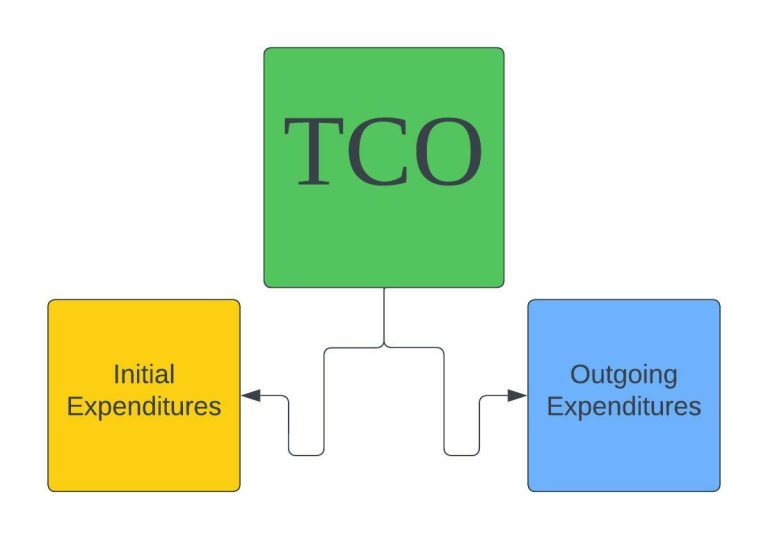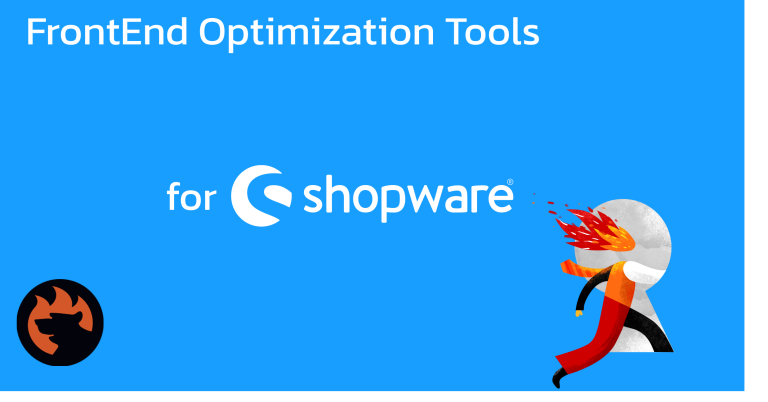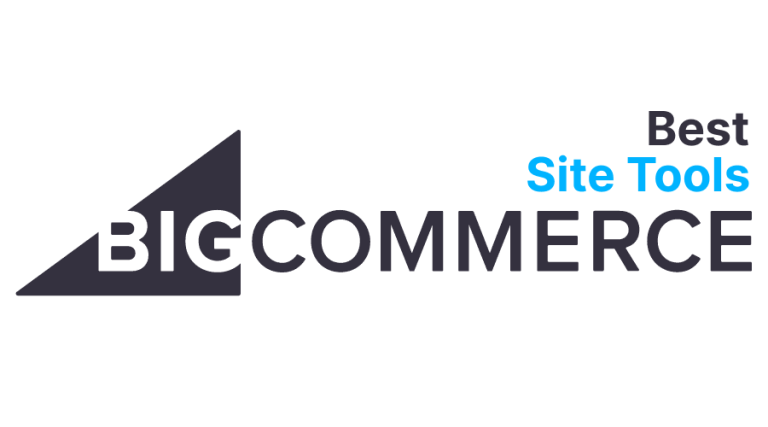If you run a search for product marketing on Google N-Gram to scan its mentions in literature, you’ll quickly realize the term wasn’t in use until the 1920s. It goes without saying that, although no one talked about it, product marketing was around for as long as there were products to sell.
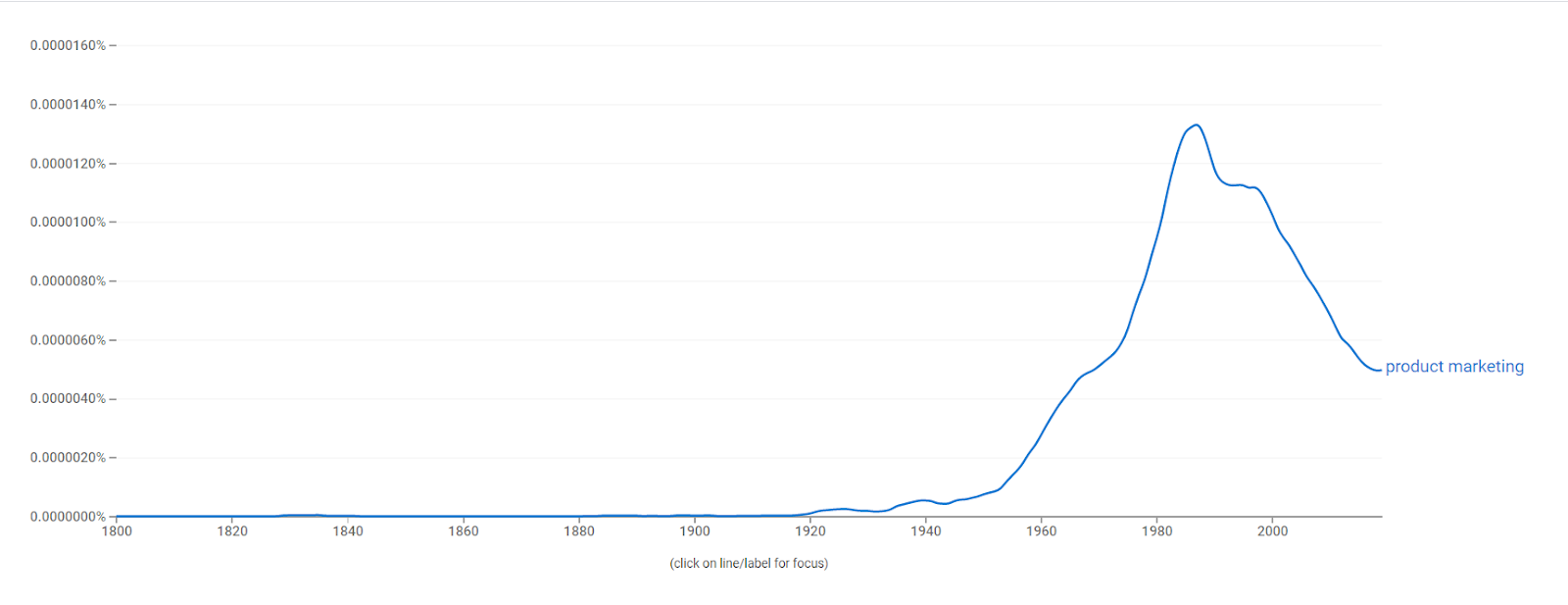

In fact, studies suggest that, back in ancient Rome, people were spreading awareness of goods by using trade cries, putting up shop signs, or paying for ads in magazines.
Product marketing officially became “a thing” much later, in the 1930s, when Neil McElroy (the guy who founded NASA and worked as the Secretary of Defense) hired two brand men for Procter & Gamble.
Together, they shifted the focus of the organization from product-making to customer interaction, setting the starting point for modern-day product marketing practices.
These days, product marketing is no longer optional – it’s a necessity for all managers who promote physical or digital products. In e-commerce, it helps discover and reach target demographics, track competitors, and provide customers with better experiences.
Seeing as business owners have no excuses for not jumping on the product marketing bandwagon ASAP, let’s break down its benefits, differences from other marketing approaches, and helpful strategies that will get your product to millions of potential customers.
What Is Product Marketing?
Unless you have worked in product marketing for years, there’s no shame in wondering “Why does it exist in the first place?”.
The thing about product marketing is that it’s a role at the intersection of three departments – product development, customer support, and sales. The common ground PMMs share with other teams is the product.
Let’s break down the way product marketers interact with other customer-centered departments:
Product marketing and customer success:
Customer success managers are helpful providers of user feedback for product marketers. Later, a PMM will use the insights gathered by customer success to improve positioning, define new customers or tweak the functionality of the product.
Here are the main interaction points between product marketers and customer success managers:
- Running user interviews.
- Communicating with prospective customers via social media and the website.
- Validating market fit.
- Letting users/customers know about changes and updates to your own product.
Product marketing and sales:
The sales team usually interacts with products a ton. They show them at demo calls and watch prospects’ reactions. They explain the idea behind the product via calls and email marketing and can tell whether the positioning gets through to a prospective user.
That’s why, for product marketers, keeping tabs on what the sales department is up to is extremely useful. Here’s how we use the insights salespeople feed us:
- Getting feedback on how intuitive the product is (salespeople get a lot of product training so their perspective is valuable).
- Finding out how well focus groups resonate with the positioning of the product.
- Getting feedback from prospects after product demo calls with the sales team.
Product marketing and product development:
Researching the target market and gathering user feedback is part of a product marketer’s job. However, how can PMMs make sure that their insights turn into changes, tweaks, and features? They do that by passing key ideas on to the product development team who use the data to improve the product.
These are the ways product marketers interact with product developers:
- Providing product developers with data that helps prioritize features and updates.
- Offering the product development team with cross-product collaboration ideas.
- Reporting feedback from the customer base.
- Creating a customer-centered product development roadmap.
Product Marketing vs Conventional Marketing
The key difference between product marketing and so-called “brand marketing” is that the first one is incomparably more dynamic. Unlike company values, products change and update. New features roll out while others become obsolete – on the other hand, brand elements often stay unchanged for years.
A Google Product Marketing Manager said this about working in product marketing:
“Product is very much like a building which is constantly under construction – it’s never quite finished, there are always improvements that could be made to it.”
Of course, the differences between product and brand marketing don’t end there. Here are the most important distinctions between the two fields:
Product marketing |
Conventional marketing |
|
|
Focus |
Product: physical or virtual |
Brand – a set of abstract concepts, values, and perceptions of the company. |
|
Responsibilities of marketers |
|
|
|
Pain points |
|
Preventing brand obsolescence by constantly running marketing campaigns, building PR partnerships, and spreading viral brand-related content. |
|
Impact |
There’s a risk that a competitor will copy a product. On top of that, fast technological transformation leads to products quickly becoming obsolete. |
Good brands are timeless and unique. |
|
Change rate |
Products get frequent updates |
Brands have longer life cycles. |
To summarize, marketers often say that “a product is what you need, a brand is what you want”. Without a reliable product, companies find a hard time making a presence on the market. However, a functional project is worth little if there’s no effort to build a brand with a long-lasting reputation that will stand the test of time when the product no longer does.
That’s why the most reasonable strategy is to invest in both product and brand marketing.
Product Marketing is Essential For Your Ecommerce Store
The hurdle that keeps most from online shopping is the inability to engage with products and make sure what you see online is what you get. That’s why ecommerce business owners, more than other business managers, could benefit a great deal from product marketing hacks and strategies.
Here is how online store managers benefit from implementing the best product marketing strategies.
1. Helping prospective customers engage with products.
Product marketing helps bridge the gap between a seller and a buyer who are often thousands of miles away from each other. By giving store visitors a chance to see the product from different angles, try it on, or customize it, product marketing managers help shoppers be confident in their purchases.


Example: to help ecommerce store visitors build a strong connection with its products, marketers at ASOS feature a detailed gallery for items as well as videos that show clothes “in action”.
2. Deeper understanding of the audience.
Product marketing is founded on market research. Before launching new releases, PMMs confirm that there’s a market where these could be distributed. Market research and competitor analysis give marketing teams a precise understanding of the target customers, their interests, goals, and pain points.
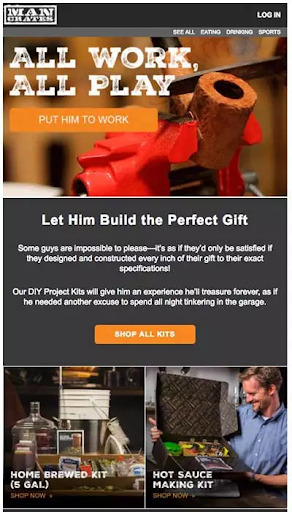

Example: a solid understanding of the target audience is a powerful weapon. Man Crates, for one, discovered an important insight about giving gifts to men: it’s ridiculously hard. Most guys don’t wish for anything and, if they do, they rarely share with families or significant others. The company transformed the insight into a compelling offer – letting men build their own versions of perfect gifts.
3. No competitor can surprise you.
When done right, product marketing gives ecommerce startup owners visibility into all aspects of their competitors’ operations. There are tools PMMs use to get the hang of everything – how many people there are on a competitor’s team, how many products they host, which ads they run, what communication style they prefer?
As for our team, these are the must-have competitor analysis instruments:
Example: keeping an eye on competitors is key to excellent product differentiation. Think about how Pavel Durov, the founder of Telegram would repeatedly call out questionable security practices of the platform’s main rival – WhatsApp. That helps differentiate the platform and establish it as a safe, responsible messenger.
Once you run a thorough competitor analysis using all the criteria, you’ll have a vast pool of data, helpful in both product development and customer relationships.
4 Steps to Successfully Market Your Product
Launching new products requires a ton of effort and time – however, at the end of the day, most releases fail. Statistically, only 5% of all rolled-out products stand the test of time. A lot of reasons are to blame – poor functionality, no demand for the idea, and others.
The lack of a thought-out product marketing strategy is another reason why product launches take a hit. In the age where even tech giants like Google or Amazon heavily invest in spreading awareness about their releases, small business owners need to work twice as hard to accomplish half as much.
Planning your product marketing roadmap is a good place to start. We broke the process of spreading product awareness and retaining customers into five steps – let’s go over them.
1. Define the product market.
There are different ways for product marketers to discover and connect with target audiences. Some of them are technologically sophisticated while others are straightforward:
- Watching shoppers “in action”. In an article, McKinsey points out that “what people do is drastically different from what they say they do”. Watching website visitors and shoppers “in the field” helps capture and simplify customer journeys, find out which objections prospects have, and discover what products have the highest cross-selling potential.
- Using business intelligence tools. Implementing advanced analytics exponentially improves the efficiency of product marketing.
- Social media listening. Modern-day shoppers (Millennials and Gen Z) are in constant pursuit of authentic product reviews so they go to places where everyone can share opinions freely – social media. Product managers need to listen carefully to social proof. It’s worth keeping in mind that most shoppers won’t use the brand’s official handle in reviews – that’s why marketers use elaborate technology to scour Facebook, Twitter, and Instagram for product mentions.
2. Determine product positioning.
The starting point of product position is knowing exceptionally well how the product works. Until a product marketer is well-versed in the features of the product and the problems it helps solve, there’s no point in contemplating differentiation.
To learn more about the product you are making, ask yourself and the team the following questions:
- Describe the product briefly. What does it do?
- How much does the product cost to users? How much time does a user need to accomplish his goals?
- What are the benefits of using the product?
- Are competitors offering similar products? What are their drawbacks?
- What are the limitations of your product? How do you plan on dealing with them?
3. Create goals for the product.
To make the most of product marketing, business managers need a clear understanding of the end goal they want to reach by launching the product.
The former CEO of Twitter acknowledged the importance of setting clear product goals and pointed out the practice of establishing definite objectives is used at Google as well.
“The thing that I saw at Google that I definitely have applied at Twitter are OKRs – Objectives and Key Results. Those are a great way to help everyone in the company understand what’s important and how you’re going to measure what’s important. It’s essentially a great way to communicate strategy and how you’re going to measure strategy. And that’s how we try to use them.”
The standard examples of product goals are:
- Become a #1 seller in the store.
- Generate X$ in revenue.
- Increase traffic to the store by Y visitors.
- Be recognized by a set number of bloggers and opinion leaders.
4. Promote the product after its release.
Laying the groundwork is important for creating appealing products or marketing materials. However, PMMs have as much work after the release – most of it revolves around choosing the right promotion channels. A good starting point for product promotion is:
- Running targeted ad campaigns on social media.
- Publishing guest posts on credible platforms.
- Collaborating with opinion leaders.
Word of mouth advertising at conferences, webinars, and events.
After you tried different tactics, analyze gathered data to see what works and what doesn’t. By investing in channels that work and letting go of those that don’t, product marketers maximize the efficiency of marketing efforts.
7 Effective Product Marketing Strategies
When done right, product marketing can be a game-changer for companies. How can small business owners boost revenue and sales using product marketing? We drew up 7 effective product marketing strategies business owners can use to spread the word about their future releases.
1. Create Youtube videos with the product.
An image is worth a thousand words, and a video can speak for a million. If you are not sharing product-themed content already, you are missing out on a powerful customer acquisition tool.
Product videos come in different shapes and forms. Here are the most popular and conversion-generating types.
- Product unboxing and review.
- How-to-use tutorial.
- Videos featuring client testimonials.
- Product demo that shows a new release from all angles.
Example: SkullCandy helps first-time customers use the company’s headphones confidently by publishing online tutorials on Youtube.
2. Work with a brand ambassador or an influencer.
Influencer marketing is one of the most ROI-yielding product marketing strategies at the moment.
There are different ways to get endorsement – there are many more:
- Giving influencers free gifts in exchange for social media or blog product reviews.
- Guest posting on relevant blogs.
- Inviting opinion leaders to start blogging on the brand’s social media accounts for a set period of time.
- Encouraging influencers to share discount promo codes with their followers.
- Hiring influencers as brand ambassadors.
- Sharing press releases.
- Co-creating content.
3. Reuse customer-generated content.
Generally, prospective customers don’t trust brand-backed ads, videos, and pictures. They have their reasons – with a few hours of professional retouching, high-quality photos have nothing in common with the real thing.
To make sure expectations meet reality, a growing number of prospective shoppers look for reviews online. They make buying decisions based on photos and testimonials of other shoppers. These posts are generally called user-generated content.
Can brands take advantage of customer-generated content? Yes, and they should. Here are the ways to take control of product reviews and turn them in your favor:
- Post customers’ video testimonials on the brand’s social media.
- Create a hashtag that will aggregate all UCG about the product.
- Run contests that encourage shoppers to generate content.
Example: Natori, a lingerie store, uses the hashtag #Natori on Instagram to aggregate consumer-generated content.


4. Create a story about your product.
Scientists confirm that our brains love stories.
Product marketing strategies are not about new features, wide color ranges, or free shipping. Eventually, your competitors will offer these benefits as well – however, a compelling story sets products apart and is unique to the brand.
Here are the signature traits of meaningful brand stories:
- They are personal.
- They are simple.
- They are emotional.
- They are unique.
- They look at the future, not the past.
Example: Revelry, a wedding dress designer brand, tells compelling product stories from the point of view of the company’s CEO. This way, the story comes across as genuine and resonant.


5. Create gift guides.
How do you choose which present to give loved ones?
For ecommerce business owners, creating a gift guide is a good opportunity to present their products, sell bundles instead of single units, and create a viral piece that’ll be hot on social media.
How should you go about creating a gift guide? Give these hacks a try:
- Ask customers to share present ideas on social media.
- Partner with affiliate marketing companies to include the product in a gift guide.
- Reach out to suppliers for suggestions.
- Add bundles to gift guides – we all love giving and getting packaged presents.
- Create a last-minute gift guide and share it via email list.
- Make video gift guides.
Example: Larq, a self-cleaning water bottle bundles products in gift sets making a compelling offer to anyone who’s looking to give a loved one a thoughtful present.
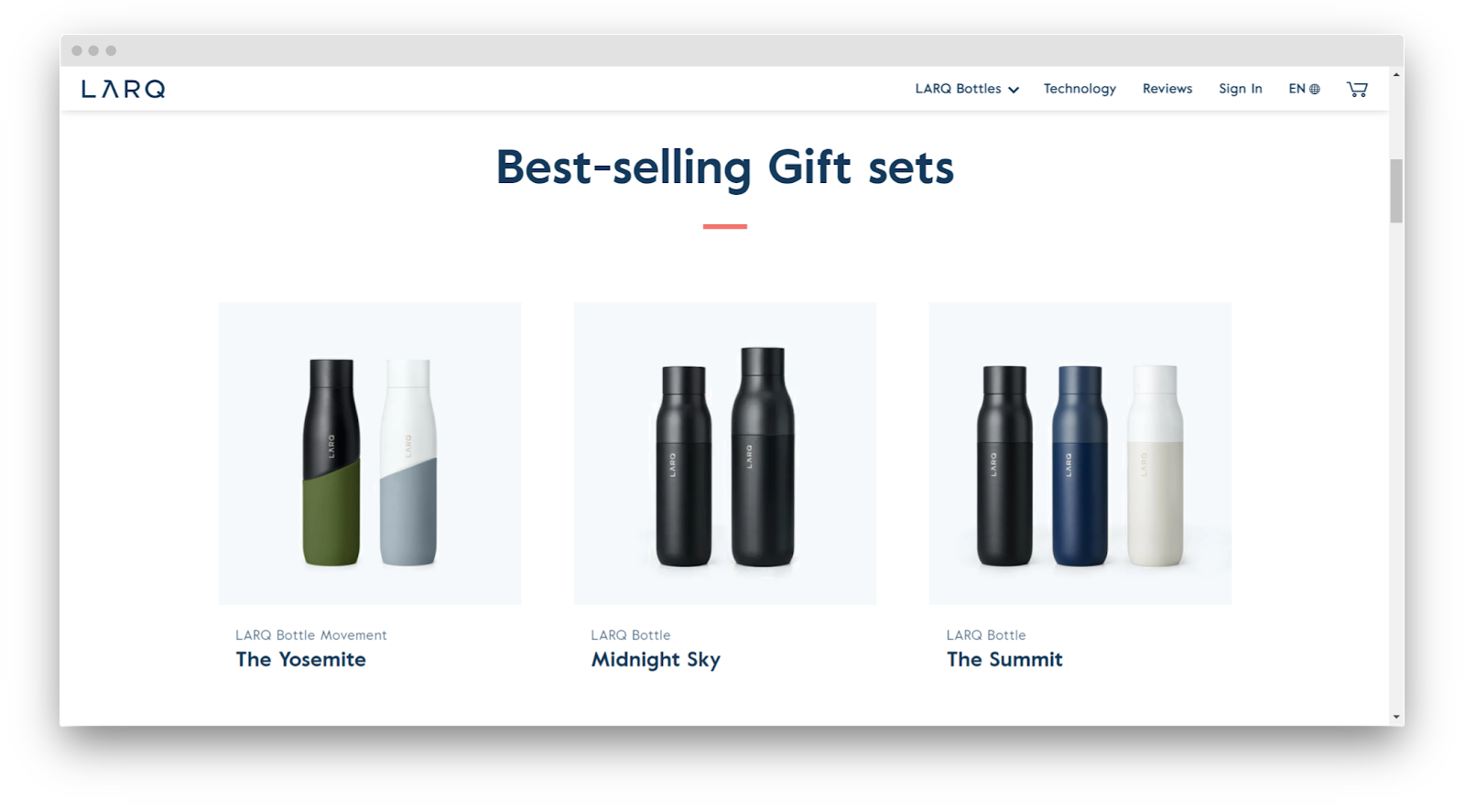

6. Launch supporting giveaways and contests.
Giveaways and contests don’t generate immediate profit – however, in the long run, they help spike interest in the product.
How to make sure you make the most out of branded contests? Try launching different types of giveaways:
- User-generated content marketing contests.
- Follow-to-win giveaways that help increase subscriber count.
- Tag-a-friend contests spread the word about the product.
- Engagement contests (a person who reacted and commented to most branding posts wins).
7. Provide special offers and discounts.
One way to get people to buy something they had no interest in is by wrapping the offer in a good discount.
Although everyone has heard that coupons are a deceitful marketing tactic, we just can’t help it. Coupons are not the only way to incentivize customers – here are five types of discounts:
- Offer discounts for kits and bundles.
- Give volume discounts.
- Offer free product shipping.
- Sell 2-in-1 packages.
- Tie discounts to events or seasons.
Example: Bliss, a skincare product maker, encourages users to place orders by offering discounts and bundled offers.
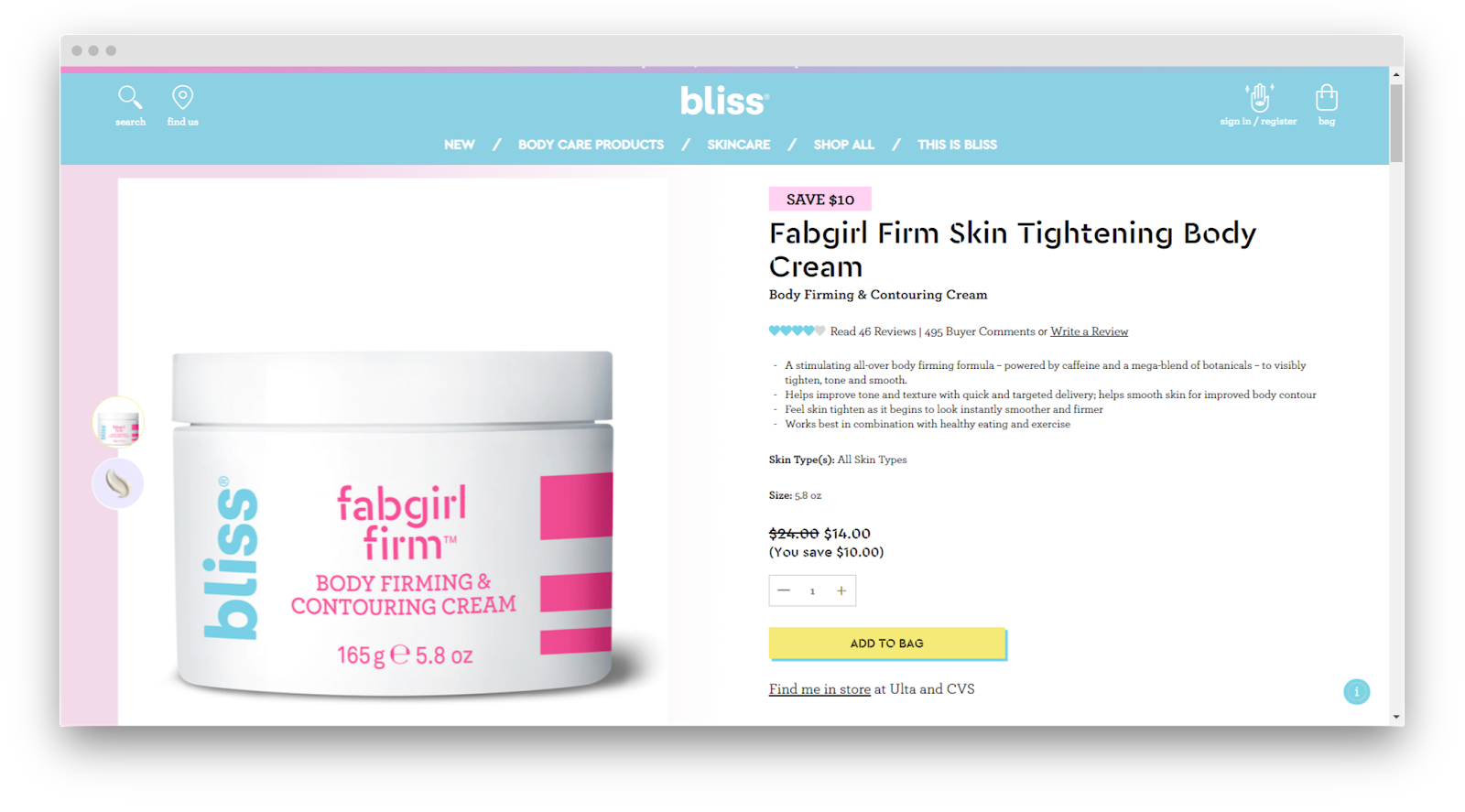

Wrapping up
There are several takeaways to point out about product marketing. One, it gets special treatment for a reason – spreading the word about products is drastically different from promoting the brand as a whole.
Two, for e-commerce stores, product marketing is a game-changer as it helps build trust and retain one-time customers. Three, business owners need a clear, step-by-step strategy before they start exploring product marketing tactics. Four, there is indeed no shortage of tactics and tricks for PMMs to explore. Take your time to test different approaches to product marketing – at the end of the day, you’ll find effective ways to engage with customers.


